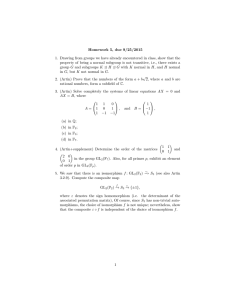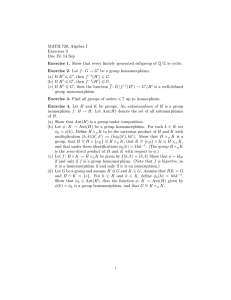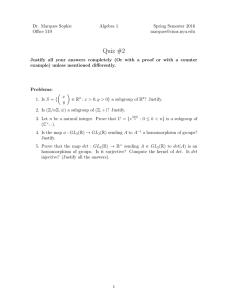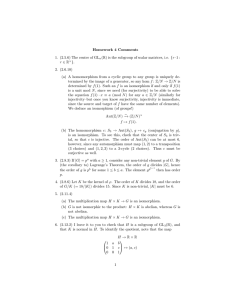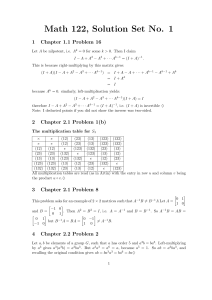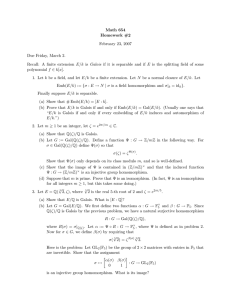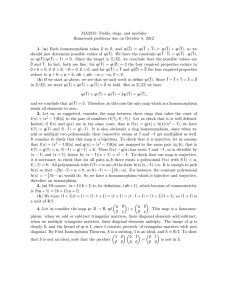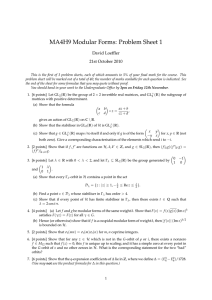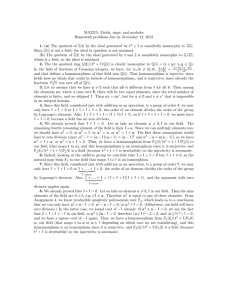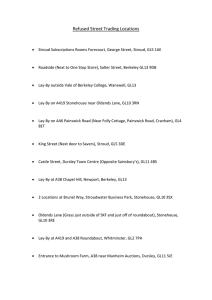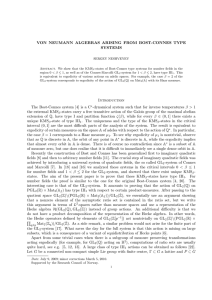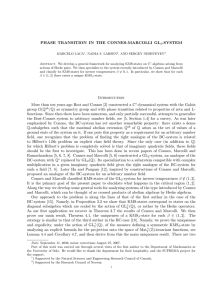1. Most of you took G = D
advertisement
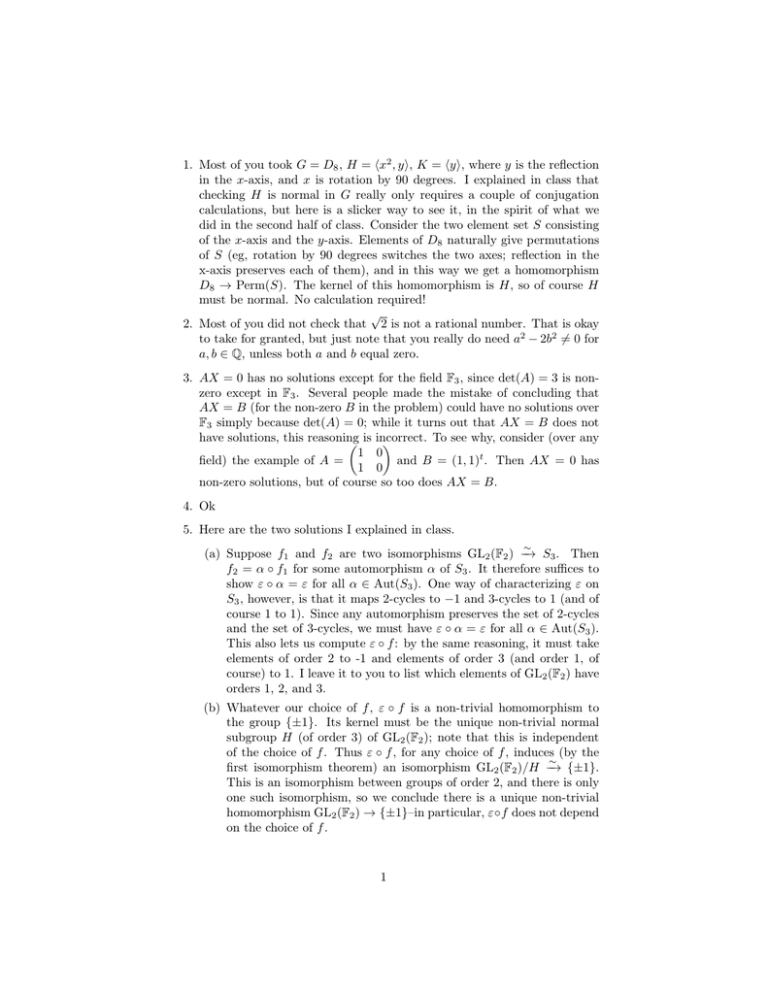
1. Most of you took G = D8 , H = hx2 , yi, K = hyi, where y is the reflection
in the x-axis, and x is rotation by 90 degrees. I explained in class that
checking H is normal in G really only requires a couple of conjugation
calculations, but here is a slicker way to see it, in the spirit of what we
did in the second half of class. Consider the two element set S consisting
of the x-axis and the y-axis. Elements of D8 naturally give permutations
of S (eg, rotation by 90 degrees switches the two axes; reflection in the
x-axis preserves each of them), and in this way we get a homomorphism
D8 → Perm(S). The kernel of this homomorphism is H, so of course H
must be normal. No calculation required!
√
2. Most of you did not check that 2 is not a rational number. That is okay
to take for granted, but just note that you really do need a2 − 2b2 6= 0 for
a, b ∈ Q, unless both a and b equal zero.
3. AX = 0 has no solutions except for the field F3 , since det(A) = 3 is nonzero except in F3 . Several people made the mistake of concluding that
AX = B (for the non-zero B in the problem) could have no solutions over
F3 simply because det(A) = 0; while it turns out that AX = B does not
have solutions, this reasoning
To see why, consider (over any
is incorrect.
1 0
field) the example of A =
and B = (1, 1)t . Then AX = 0 has
1 0
non-zero solutions, but of course so too does AX = B.
4. Ok
5. Here are the two solutions I explained in class.
∼
(a) Suppose f1 and f2 are two isomorphisms GL2 (F2 ) −
→ S3 . Then
f2 = α ◦ f1 for some automorphism α of S3 . It therefore suffices to
show ε ◦ α = ε for all α ∈ Aut(S3 ). One way of characterizing ε on
S3 , however, is that it maps 2-cycles to −1 and 3-cycles to 1 (and of
course 1 to 1). Since any automorphism preserves the set of 2-cycles
and the set of 3-cycles, we must have ε ◦ α = ε for all α ∈ Aut(S3 ).
This also lets us compute ε ◦ f : by the same reasoning, it must take
elements of order 2 to -1 and elements of order 3 (and order 1, of
course) to 1. I leave it to you to list which elements of GL2 (F2 ) have
orders 1, 2, and 3.
(b) Whatever our choice of f , ε ◦ f is a non-trivial homomorphism to
the group {±1}. Its kernel must be the unique non-trivial normal
subgroup H (of order 3) of GL2 (F2 ); note that this is independent
of the choice of f . Thus ε ◦ f , for any choice of f , induces (by the
∼
first isomorphism theorem) an isomorphism GL2 (F2 )/H −
→ {±1}.
This is an isomorphism between groups of order 2, and there is only
one such isomorphism, so we conclude there is a unique non-trivial
homomorphism GL2 (F2 ) → {±1}–in particular, ε◦f does not depend
on the choice of f .
1
